On that beach walk the other day on which we saw the various shorebirds, we also got a peek at some tidepool inhabitants, notably anemones.
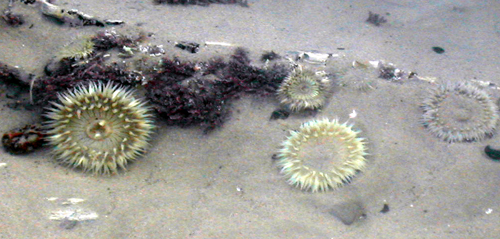
The tidepool dwelling anemones may look like flowers, but they’re actually invertebrates.

There are a bunch of species of anemone within the genus Anthopleura, and I wasn’t committed enough to actually messing with the critters in ways that would help me make a definitive identification. (For example, this site says that A. xanthogrammica can be distinguished from A. sola by way of its “tighter sphincter muscle”. I can live with the uncertainty, thanks.)
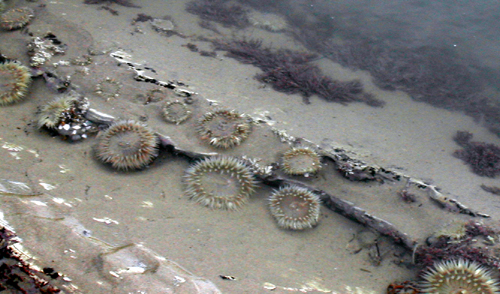
A. elegantissima are colonizing anemones, while A. sola are solitary, although for some time apparently they weren’t recognized as separate species. The tide was going out as we were walking, but the pools we peeked into were pretty close to the shoreline — which is to say, I don’t know how representative they were of optimal tidepool conditions. The anemones we saw in these pools were not obviously clumped together in colonies (or “aggregated”), so if I had to bet, I’d say we saw A. sola.
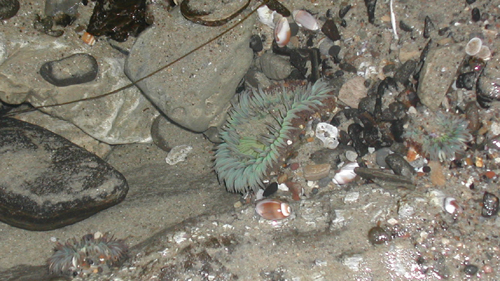
The aggregating anemones sound pretty cool, though. Here’s what the Multi-Agency Rocky Intertidal Network website has to say about their biology:
Aggregating anemones are so abundant most likely due to their ability to produce clones of themselves by longitudinal fission. Non-clonemates are spatially separated after aggressive stinging battles.
I suspect it’s wrong that I think it would be fun to watch a stinging battle. (I wouldn’t go and provoke one for my own entertainment, but if I happened by as one was underway …)
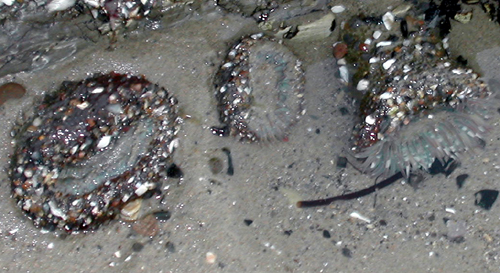
As the tide is going out, some of the anemones are harder to spot. That’s because they don’t leave their tentacles hanging out, exposed to the sun and the air. Rather, they take measures to prevent themselves from drying out. Again, from the Multi-Agency Rocky Intertidal Network website:
When exposed to air, these anemones contract their tentacles inward to their oral disk, leaving only the exterior surface of the stalk visible. This surface is covered with shell fragments to prevent desiccation. If they are squished in this closed position, water squirts out the oral cavity and through pores in the stalk.
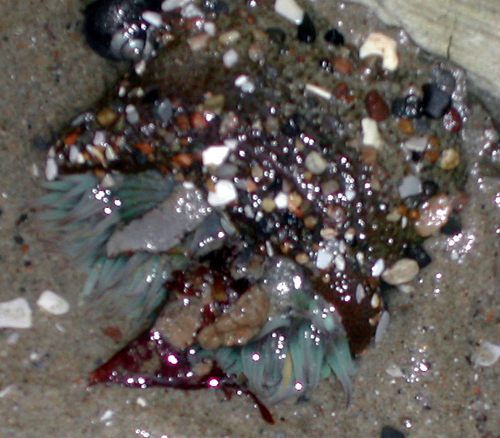
While the Multi-Agency Rocky Intertidal Network website doesn’t go into great detail about their feeding habits, the Monterey Bay Aquarium Online Field Guide notes that anemones will use those tentacles arrayed about the oral disk to sting and paralyze pretty much any fish (or even small crab) that gets close enough. In other words, they’re not terribly picky eaters. Also, they get a nutritional boost (not to mention pretty colors) from the algae living in their tissues. Finally, should they get so buried in sand that it interfered with their ability to feed, anemones can metabolize their own tissue to survive for a few months.
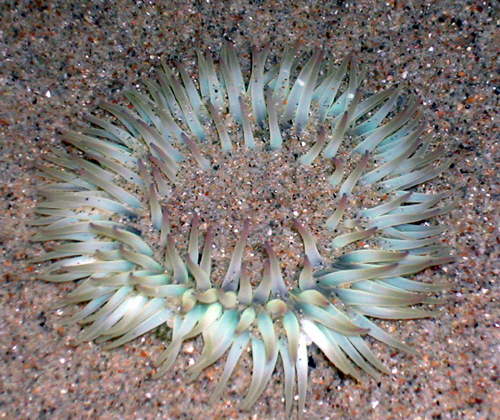

Cool pics. Thanks! Tide pools can be such fascinating places. I be a marine biologist could spend a whole day just explaining half of what you find!
Dave Briggs :~)